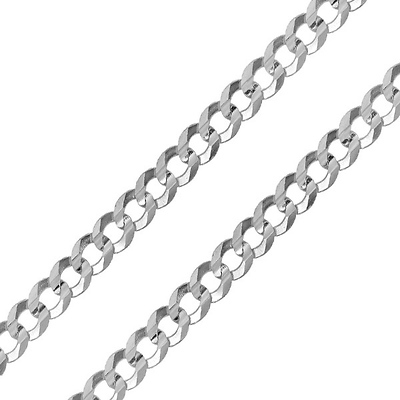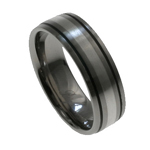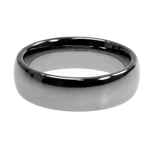|
|
 |
| Moving Beyond Gold Jewelry |
| Nov-05-2007 |
 For as long as man has been able to craft jewelry, the gold standard for shiny ornamentation has been, well, gold. And for good reason. Gold is reasonably abundant, but not so much as to detract from its value, malleable (one gram can be pulled into a thread almost two miles long), stable, and can be polished to a sun-like finish. However, gold is not your only choice for, say, your wedding bands. If you prefer white metal jewelry (and many people do), a world of alternatives open to you. The most prevalent alternative to gold is white gold -- gold alloyed with a white metal such as nickel. White gold became popular during the Art-Deco 1920's as a lower-cost alternative to then-popular platinum. It has remained a popular choice for engagement rings, because it doesn't threaten to add a yellow tinge to the colorlessness of better diamonds. The downside of white gold has been the allergic reaction that some people experience to the nickel commonly used to give the metal its white color. The response, nickel dermatitis, is common enough that the European Union does not allow gold/nickel alloys in jewelry. Fortunately, white gold can also be made with non-allergenic silver or palladium in place of nickel. For as long as man has been able to craft jewelry, the gold standard for shiny ornamentation has been, well, gold. And for good reason. Gold is reasonably abundant, but not so much as to detract from its value, malleable (one gram can be pulled into a thread almost two miles long), stable, and can be polished to a sun-like finish. However, gold is not your only choice for, say, your wedding bands. If you prefer white metal jewelry (and many people do), a world of alternatives open to you. The most prevalent alternative to gold is white gold -- gold alloyed with a white metal such as nickel. White gold became popular during the Art-Deco 1920's as a lower-cost alternative to then-popular platinum. It has remained a popular choice for engagement rings, because it doesn't threaten to add a yellow tinge to the colorlessness of better diamonds. The downside of white gold has been the allergic reaction that some people experience to the nickel commonly used to give the metal its white color. The response, nickel dermatitis, is common enough that the European Union does not allow gold/nickel alloys in jewelry. Fortunately, white gold can also be made with non-allergenic silver or palladium in place of nickel.
Silver is another very popular choice for rings. Its greatest advantage is low cost; silver prices are often 5% that of gold. It too is easily worked, and can be cast (melted and formed in a mold) and soldered into intricate shapes. However, silver is relatively soft, and therefore doesn't stand up to the abuse most rings experience. Also, typical sterling silver (92.5% silver, 7.5% copper) is prone to tarnish, as you probably know if you've ever had to polish the family formal dinnerware. New alloys of sterling silver such as germanium help prevent tarnishing but do little for the durability question.
Perhaps your best choice for durability, strength and beauty is platinum. When alloyed with a smidgen of palladium, this metal takes a beautiful, long-lasting shine. Platinum prongs (the fingers that wrap around your diamond and hold it in place) wear much more slowly than white gold. Hold on to your wallet, though; platinum is about twice the price of gold. Many people who are concerned about allergic reactions are drawn to a more uncommon, but excellent jewelry metal, palladium. This white metal also takes a high polish. It is also lighter than platinum, making it a particularly good choice for ornate earrings. Palladium came into use during WWII, when platinum was restricted to military use only. There are good reasons why Palladium isn't more widely used in jewelry, though. It is very hard to cast, because it oxidizes, resulting in unacceptable pitting.
 For the space-age set, titanium can be an exciting choice. The strongest metal on Earth is better known for use in joint replacements, and as a whitener in paint, paper, and even toothpaste. However titanium rings are virtually indestructible, and can be polished to a high gleam. Titanium can also be anodized (colored by passing an electrical current through it) producing a lovely gray/black finish that is permanent. On the down side, titanium cannot be soldered or cast, which rules out most applications other than bands. For the space-age set, titanium can be an exciting choice. The strongest metal on Earth is better known for use in joint replacements, and as a whitener in paint, paper, and even toothpaste. However titanium rings are virtually indestructible, and can be polished to a high gleam. Titanium can also be anodized (colored by passing an electrical current through it) producing a lovely gray/black finish that is permanent. On the down side, titanium cannot be soldered or cast, which rules out most applications other than bands.
An even more esoteric choice is tungsten carbide. Tungsten carbide might appeal to machinists, since it is the compound used to cut and shape steel. The metal is so hard that one retailer of tungsten carbide rings guarantees to replace the ring should even a single scratch appear. As you can imagine, something this hard is going to be weighty, a concern for some. and shape steel. The metal is so hard that one retailer of tungsten carbide rings guarantees to replace the ring should even a single scratch appear. As you can imagine, something this hard is going to be weighty, a concern for some.
Gold, white gold, platinum, and more ?" choice is good. In the end, though, there is no correct choice, except the one that delights you. Or, for some of us, that choice could be -- one of each? |
|
|
Posted by Tom B at 6:35 PM - Link to this entry Share this entry |
| < Back to Jewelry Tips Archives |
|
 |
|
|
|